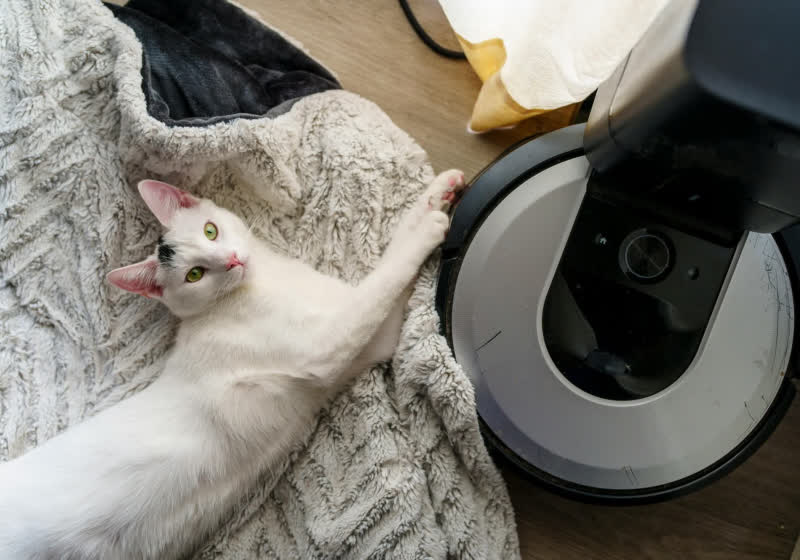ZDNET's key takeaways
- Use these codes to forward calls, pay your bill, check balances, etc.
- Some of the codes work only on certain carriers or devices.
- One of the codes also might erase your data, so use with caution.
Get more in-depth ZDNET tech coverage: Add us as a preferred Google source on Chrome and Chromium browsers.
I've always known that some carriers support phone codes -- numbers that start with * or # -- so you can check things like your data usage or bill balance. But I recently learned, thanks to ZDNET's sister site PCMag, that your device itself also supports many secret phone codes that unlock hidden menus. Admittedly, these are mostly something only techies or developers would need to access or tinker with, but if you're anything like me, learning the hacky ins and outs of your device is incredibly fun.
Also: Before you quit Netflix, use these secret codes to unlock its full library of shows
So I did a little research, found a long list of phone codes or short codes, and tried them all to see what they do. They're not all for pros -- some are surprisingly useful for everyday people who just want to, for instance, see if they have call waiting enabled.
These codes work on both Android and iPhone unless otherwise noted as device-specific. A few are carrier-specific, however, meaning they'll only work if you're on a particular mobile network (like AT&T, Verizon, or T-Mobile). And fair warning: A handful of the codes can make big changes or even wipe your phone, so read carefully before typing them into your keypad.
Entering *#06# into your iPhone's dialer and pressing the green call button will display your device's unique identification number, known as the IMEI, along with your EID -- a unique 32-digit serial number found on devices that support eSIM technology. If you have a dual SIM or eSIM phone, you'll see more than one IMEI listed. This number is often needed when reporting a stolen phone, checking warranty status, or unlocking your device for use on another carrier.
Also: Your Roku has secret settings and menu screens - here's how to unlock them
Tip: On an iPhone, you can also find the IMEI under Settings > General > About, but using the code is faster.
Type *3001#12345#* to open the "FTM Dashboard" (Field Test Mode Dashboard) -- a hidden engineering menu that displays your carrier, capabilities, phone number, cell tower IDs, network bands, and your signal strength measured in dBm instead of bars. You'll also see other information listed in this menu, although much of it is jargon only technicians would understand.
OK, while the code above is for iPhone users, this one is for Android users. It opens a technical menu with phone status, LTE/5G info, Wi-Fi details, app usage stats, and battery history. It's mainly intended for technicians diagnosing connectivity issues or checking detailed system health. Most people probably won't understand it.
Also: How to clear your Android phone cache (and give it a serious speed boost)
Some carriers let you dial these codes to see if call forwarding is enabled and which number your phone is currently forwarding calls to -- either when you're busy (*#67#) or for all calls (*#21#). You can change it to forward calls to another number, such as your home, office, or a third-party answering service, in settings.
On iPhone, to change the forwarding number, go to Settings > Phone > Call Forwarding. On Android, the steps vary, but generally you'll open the Phone app, tap the three-dot menu, go to Settings > Calling accounts, select your active SIM, and then look for the call forwarding option.
If you see "Failed/Error" instead of "Enabled/Disabled" displayed after entering these codes -- and you don't see call forwarding in your settings -- it likely means your carrier doesn't support the feature on your plan.
Similar to the call forwarding menu above, dialing *#43# lets you check whether call waiting is enabled -- the feature that alerts you to another incoming call while you're already on one.
To enable call waiting on an iPhone, go to Settings > Phone > Call Waiting and toggle the switch on. On an Android phone, you typically open the Phone app, then go to Settings > Calls > Supplementary Services > Call Waiting and toggle it on, though the steps may vary by device.
Also: How to clear your iPhone cache (and why it makes such a big difference)
If you enter the code and see "Failed/Error" instead of "Enabled/Disabled" -- and you can't find a call waiting option in your phone's settings -- your carrier likely doesn't support this feature on your plan.
Call forwarding is useful if you're traveling, using a different phone temporarily, or want all calls sent to a work or home line instead of your mobile. With this code, it's easy to forward all incoming calls to another number -- just enter *21[number]# into your dialer. (The number that's in brackets will be the destination for your calls.) As mentioned earlier, you can also enable or disable call forwarding in settings if your carrier and plan support it.
If you want to keep tabs on your data usage, each major carrier has its own code. Verizon customers can dial #3282, AT&T users can dial *3282#, and T-Mobile customers can dial #932#. You'll get a text showing how much data you've used and, in most cases, when the cycle resets -- great for avoiding overage charges or throttling.
Your iPhone can receive emergency, government, and public safety alerts, including AMBER alerts, extreme weather warnings, and imminent threat notifications. By default, these are turned on, and you'll hear a loud, alarm-like sound when one arrives. You can enable or disable them anytime by going to Settings > Notifications and toggling the alert types under Government Alerts.
You can also dial *5005*25371# to check if your phone is set to receive test alerts from government and emergency services. This code doesn't trigger a real alert -- it simply returns a yes or no to confirm whether the feature is enabled. If it's on and you'd rather disable it without going into settings, dial *5005*25370# and press the call button to turn it off.
In the US, dialing *67 before a phone number hides your caller ID for that one call, making "Private Number" appear on the recipient's screen, which is useful when calling businesses or people you don't know well. Outside the US, the equivalent code is *31#, so it works the same way in regions where *67 isn't supported.
Tip: If your caller ID is normally hidden but you want it to appear just once, dial *82 before the number to temporarily unblock it.
I didn't test this code because reports say it will instantly wipe an Android phone and reinstall its original firmware -- with no warning screen. Yikes. I suggest using it only if you're selling, recycling, or fully restoring your device, as it will completely erase everything and start fresh.
What's the difference between phone codes and short codes?
I call the codes in this guide "phone codes" throughout, but you may notice some carriers refer to their specific codes as "short codes." They're the same thing.
Are phone codes dangerous to use?
Most are safe, like the bill pay and data balance codes. But the factory reset code I mentioned last can reportedly erase all your data instantly, so it definitely comes with a big warning.
Are some codes carrier-specific?
Yes. Many of the codes I mentioned only work on certain mobile networks because they're provided by those carriers.
Will all codes work on my phone?
No. Some are platform-specific (Android or iPhone), and some are tied to carriers.
What if I mess something up?
If you enabled or disabled something by accident, you can undo it through your phone's settings or by re-entering the code. If that fails, back up your data and perform a reset.

 3 months ago
75
3 months ago
75









 English (US) ·
English (US) ·